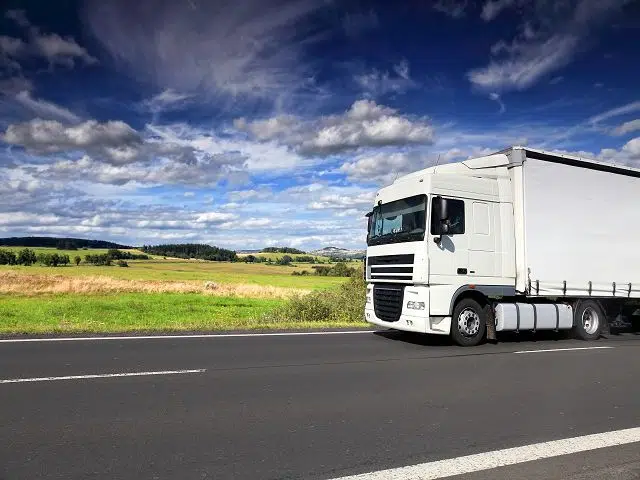Out of Gauge and Heavy Haul Trucking for Oversized Cargo

- Gooseneck trailers
- 48’ Double drop trailers
- 48’ Spread axle trailers
- 3 axle Stepdecks
- Lowboys
- 35 ton capacity Lowboys
- 50 ton Lowboys (RGNs)
- Stepdecks
- Double dropdecks
InterStateCarriage Freight maps routes for heavy haul trucking. We obtain state by state permitting for heavy haul trucking cargo. We do analysis on all our loads by weight options and contracting the best carriers for the lanes. InterStateCarriage Freight contracts pole cars and police escorts for very sensitive or very large heavy haul trucking moves.
Furthermore, we do route surveys to forecast and get around possible road dilemmas before our truckers face them on the road. Last, based in Georgia, InterStateCarriage Freight offers rigging services. We can get crane services and crews to load and unload both at origin and destination sites for heavy equipment and for special projects.
As break bulk cargo and project logistics specialists, InterStateCarriage Freight ships heavy loads across the United States to our export crating and packing facilities, thence to the port of export, or across land ports of entry with Canada and Mexico.
On occasion, heavy haul trucking cargo needs to get on a chartered airplane for urgent shipping to foreign countries. Due to our excellent relationships with heavy cargo airplane owners, we can do air charters on very short notice.
For freight going overseas, InterStateCarriage Freight has project cargo resources at the ports to leverage. We have export crating competencies. And we have a variety of assets that can manage, aid and assist in moving heavy cargo in every way.
The Challenges of Heavy Haul Shipping
Heavy haul shipping, the transport of oversized or overweight cargo that exceeds standard legal size or weight limits, is a critical aspect of logistics management. However, it comes with its own set of unique challenges that need to be effectively addressed to ensure safe, efficient, and timely delivery. Here are some of the key challenges involved:
Planning and Coordination
The planning and coordination involved in heavy haul shipping can be complex. Each shipment may require special routing, specific equipment, and careful timing to avoid disrupting regular traffic. The planning process may also involve securing appropriate permits, which can vary by city, state, or country and can take time to obtain. Coordinating all these aspects simultaneously presents a significant challenge.
Compliance with Regulations
Each jurisdiction has its own regulations governing heavy haul shipping, including size and weight limits, convoy requirements, and restrictions on travel times or routes. Navigating these regulations and ensuring compliance can be a daunting task, especially for international shipments that cross multiple jurisdictions.
Equipment and Handling
Heavy haul shipping often requires specialized equipment, such as flatbed trucks, extendable trailers, or multi-axle trailers. Finding the right equipment for a specific load can be a challenge, as can ensuring the safe loading and unloading of the cargo. Additionally, the maintenance of such equipment can be costly and time-consuming.
Safety Concerns
The safety of the cargo, the transport crew, and the public is a paramount concern in heavy haul shipping. Oversized or overweight cargo can create hazards on the road, including difficulties with maneuverability, stopping distances, and stability. These safety concerns require careful planning, experienced drivers, and often escort vehicles to mitigate the risks.
Cost Implications
Due to the specialized equipment, permits, and additional labor required, heavy haul shipping can be costly. Furthermore, unexpected delays or complications, such as equipment breakdowns or changes in regulatory requirements, can add to these costs. Balancing the need for safe and effective heavy haul shipping with budget constraints can be a significant challenge.
In conclusion, while heavy haul shipping is an essential component of logistics management, especially for industries like construction, oil and gas, and heavy machinery, it is not without its challenges. However, with careful planning, regulatory knowledge, experienced personnel, and the right equipment, these challenges can be effectively managed to facilitate the safe and efficient transport of oversized and overweight cargo.
